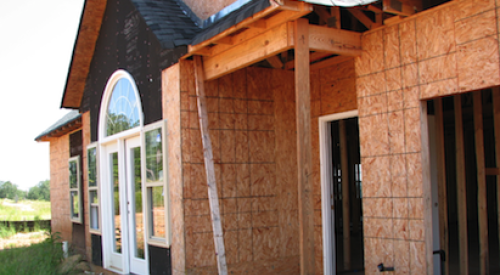For most home builders, marketing meetings begin with an ad agency presenting new concepts for newspaper ads, magazine ads or maybe an outdoor billboard campaign. Chances are most of the meeting is spent discussing various headlines, which photos to use, copy points and the size of the location map. There may even be time to review recent sales traffic from ads and make a comparison to last month's and/or last year's results. If this sounds familiar, it's time to re-prioritize your marketing attention and turn your marketing program "upside down."
New Approaches to Marketing MeetingsConsider holding your next marketing meeting without discussing newspaper ads. If you're selling new homes and believe print advertising is where you win the battleground for customers, your pyridine needs changing. Consider a new approach — prioritizing your time and your efforts around two simple measurements:
- Where do I get the greatest value for my advertising dollar?
- From which source do I get my highest quality prospects?
Start each marketing meeting with your most important sources of traffic. For example, Super Bowl winning coach Jimmy Johnson began each practice with special teams' plays. It wasn't that he didn't believe in the importance of offensive and defensive playmaking, but Johnson concluded that special teams performance provided the greatest differential in winning and losing football games and therefore ought to be put at the beginning of each practice.
Hierarchy of Meeting Time UsageBy holding "upside down" marketing meetings, you will re-prioritize your time and deal with your most important marketing tasks at the beginning of the meeting. It may feel uncomfortable at first, but you'll be spending your time more wisely. You'll impact the areas that drive the highest quality customers to your sales office.
While not every situation is the same, the following is a typical "hierarchy" of how to use your time and the order of your meeting.
•Homeowner Referrals. Homeowner referrals are a good place to start your meetings. Someone who's already had a great experience with your company will often recommend it to other potential customers. These customers are more likely to be there when times are tough and they're less likely to walk across the street to a competitor simply because of a couple of thousand dollars. That makes them the best value of any traffic source in your marketing program.
You probably already know referrals are great prospects. But how do you get more of them to your sales office? Village Homes in Denver received more than one half of its 500-plus home sales in 2002 from customer referrals.
"Referral sales require a tortoise mentality and we are an industry of hares," says John Woodland of Woodland O'Brien & Associates, who advises Village Homes on customer satisfaction.
"Delivering on your promises to your current customers is the first step, but it only gets you up to bat. To score runs you need to put systems in place that cultivate referrals from satisfied customers and recognize employees who contributed to the referral, be they the receptionist, the warranty rep or your No. 1 sales associate."
The hard part with referral sales is maintaining faith in the ultimate success of the program. Running an ad this week will most likely increase customer traffic on your next sales report. Start a homeowner referral program and it can be months or even years to see the full impact. Nevermind that the shelf life of an ad is maybe a week or two and a satisfied customer can give you referral customers for years to come.
•Signs. After discussing referrals, being to review your total sign program. It's not the "fun" part of marketing, but signs deliver results. Do not get frustrated because your signs get torn down. In this highly competitive industry, vigilance in signage creates more opportunities for those home builders that are committed to maintaining an A+ sign presence.
Consider this example from a home builder in Texas: His permanent directional signs cost 40% of one newspaper ad, and typically lasted only three weeks before they were torn down. Signs delivered the same amount of traffic each week as the newspaper ad, but the marketing director was frustrated over having to replace the sign so often. When compared, it was discovered that replacing each sign as soon as it was torn down delivered eight times the investment return of the weekly newspaper ad.
Unlike other aspects of Real Estate, location isn't the only piece of the sign puzzle that needs your attention. Signs are too important to rely on others to review design, condition and quality in an office. You should no more ask your sign company to tell you when you need to repaint your signs than you rely on your architect to tell you it's time for new home designs.
•Internet. It's a 900-pound gorilla getting bigger by the month. The Internet is now the primary way customers search for new homes. This is hardly news for home builders, but knowing how to use time and limited resources wisely on the Internet requires a little bit of insight into what home builders want to accomplish. Begin with the following:
- What do customers who visit my site want to learn?
- How do I maximize the number of potential home buyers coming to my site?
The answer to the first question is that customers require accurate information delivered with a minimum of effort and in a timely manner. Fail to deliver on the basics and they will leave your site and go elsewhere. Customers and Realtors may enjoy sophisticated home pages and selection engines that can narrow their search to homes with both a three car garage and five bedrooms, but they demand clear location maps, up-to-date pricing with a minimum of load time. Don't spend time on the former until you have conquered the latter.
If you're confused as to how to measure effectiveness of your website, it's not accidental. Web advertisers have made a cottage industry of trying to confuse you with statistics that have little or no bearing on delivery of traffic to your community. "100,000 click-throughs a month" or "1,000,000 page views per day" are largely meaningless statistics for the new home industry. While no one web statistic can measure total effectiveness, begin with "delivery of unique users with a 30 minute timeout." It a fancy way of saying how many different people visited your site last week, last month, etc. And remember, web advertisers get paid to call on you to promote advertising on their site. Just because major search engines don't call, doesn't mean your dollars are not better spent on indexing your site.
•Realtors. Go out of your way for them, and they'll go out of their way for you. Formalizing an ongoing Realtor program is essential to most successful new home marketing programs. A big problem with many builders is the tendency to get mad about paying Realtors extra just to do their job, writing a check and then giving the total assignment to the marketing department.
Create a collaborative partnership with your sales agents. Remember, no amount of home builder mass-marketing can overcome complacent on-site sales agents in the mind of the Realty professional. Collaborative programs are easy to develop. For example, your agents agree to make Realtor office presentations, you agree to provide them with food and incentives to theme the meetings, make the meetings fun and give the agents a reason to call their Realtor offices. You distribute a mass mailing on a new Realtor incentive program and your agents agree to make follow-up phone calls to see who can get the most Realtors to visit the community. You get the idea. Remember that timely recognition of a Realtor will out perform monetary incentives with any promotion you design.
Often it's not the design of Realtor program that fails; it's the builder giving up on it before Realtors know and understand what's being offered. Ask top Realtors to name the top five home builder promotions in their town, and changes are you'll have trouble getting them to complete the list. Too often, home builders get tired of Realtor promotions long before Realtors know and understand the program. Just as in the story of the tortoise and the hare, patience has its advantages.
•Print Advertising. The time to discuss print advertising falls to the end of the meeting. It's not that newspaper and magazine ads are not important components in new home marketing. It's just they shouldn't be where you spend most of your time, or most of your money. Just as the framing subcontractor gets more of your time than the company doing mirror installation, your emphasis needs to be spent on the areas that deliver the highest quality and largest numbers of customers.












